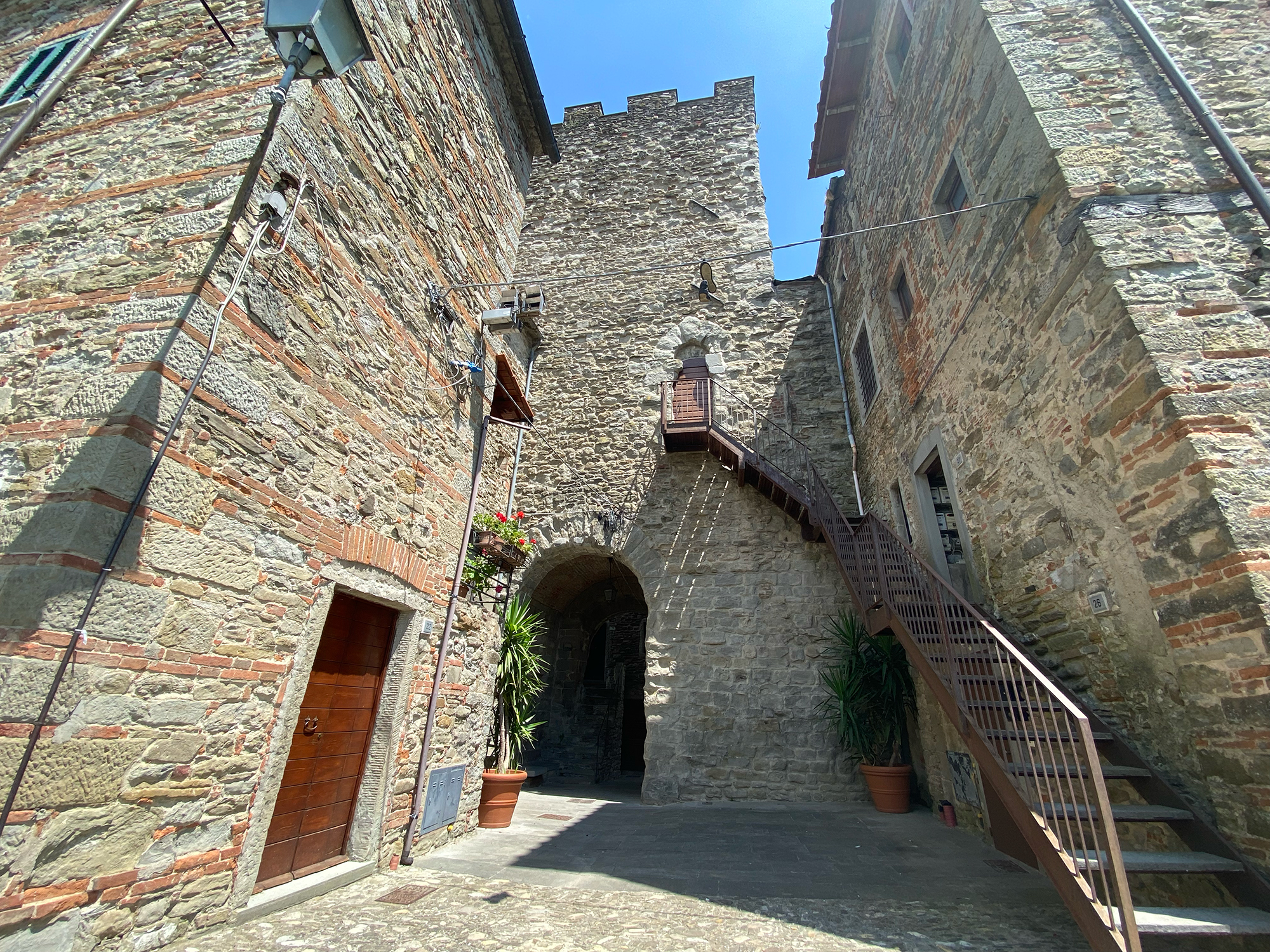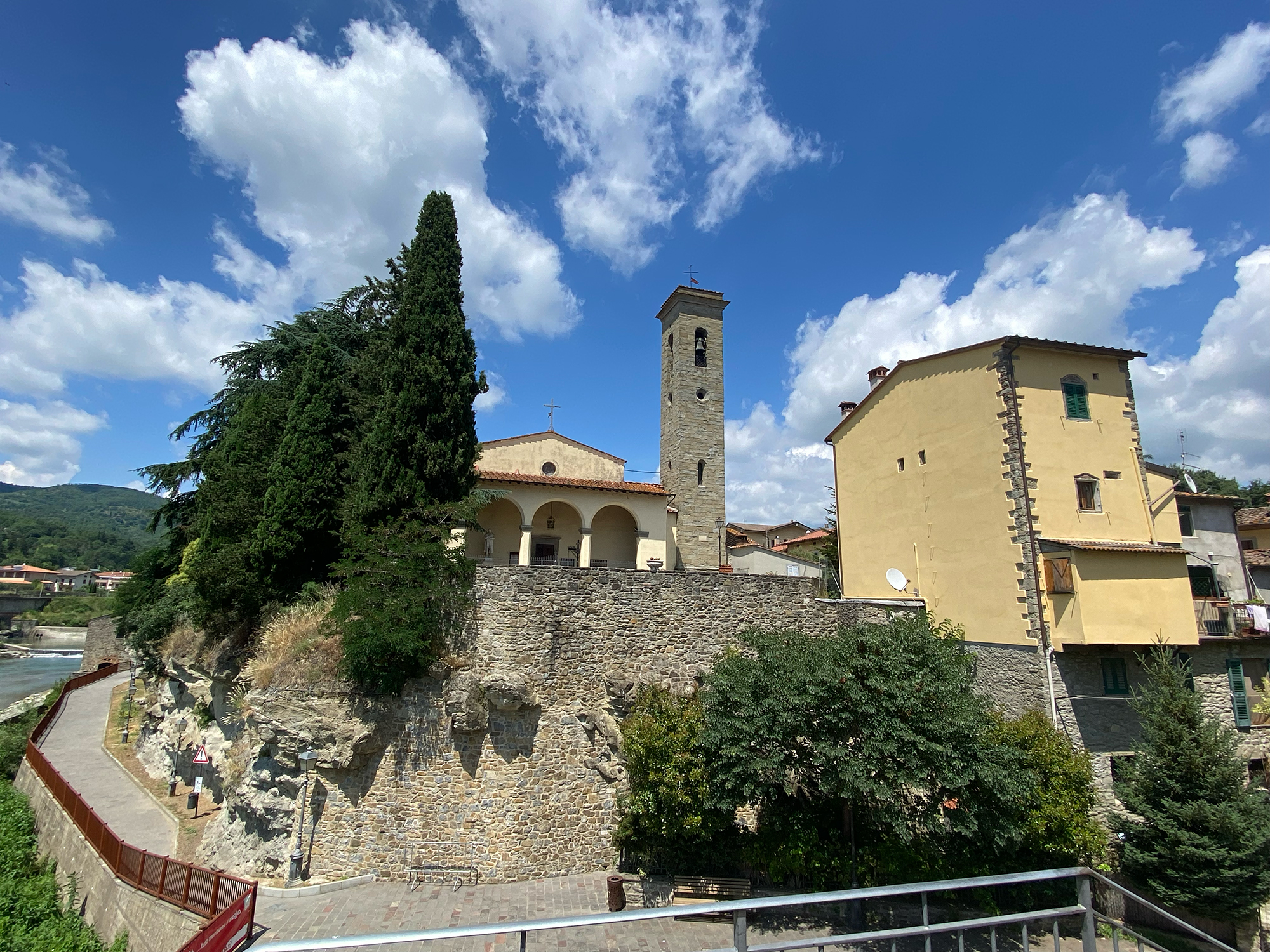











How to reach
The castle stands in the centre of the village, about 10 kilometres north of Arezzo, and can be reached by taking the SR71 Umbro Casentinese Romagnola road.
History
Subbiano is mentioned in ancient documents as 'Sibiano', but according to tradition, the place name derives from 'Sub Jano Conditum': the town was presumably founded by Janus, an ancient two-faced divinity of the Roman, Latin and Italic pagan religion, who is also featured on the municipal coat of arms. Instead, the castle dates back to a few years before the year 1000, commissioned by the Bishops of Arezzo.
Built on a rocky spur bounded to the west by the Arno river and to the north by the Palbena stream, it controlled a bridge and the main communication route between Arezzo and the Casentino. As the bed of the Arno has subsided over the years, the rock on which the fortification is built is even higher and more prominent today. From its construction until 1384, the year in which Subbiano submitted to the Republic of Florence, losing a large part of its defensive function, the castle and the surrounding territory saw illustrious and powerful families take turns as owners: the Ubertini di Chitignano, the Conti Guidi and, in the 14th century, the Tarlati di Pietramala, that ruled Arezzo at the time.
Little remains today of the original medieval structure. The most obvious evidence is the mighty crenellated defence tower with a beautiful pointed arch where the gate with a portcullis for protection was located, a walled enclosure with adjoining buildings and an inner courtyard, as well as the remains of the gate of the second town wall. Other remains clearly visible are a slit, two other long slits closed by stones where the chains of the drawbridge were inserted at the top, and the trapdoor for access to the tower, which was 19 metres high and on three levels, and could only be reached by a ladder.
The rest of the structure was transformed over the centuries, first into a stately palace, then into common houses, from 1800 onwards. The part that overlooked the Arno has unfortunately collapsed. Originally, the castle was surrounded by a large moat into which river waters flowed. On the north side there was a drawbridge that joined it to the church of Santa Maria outside the fortress.